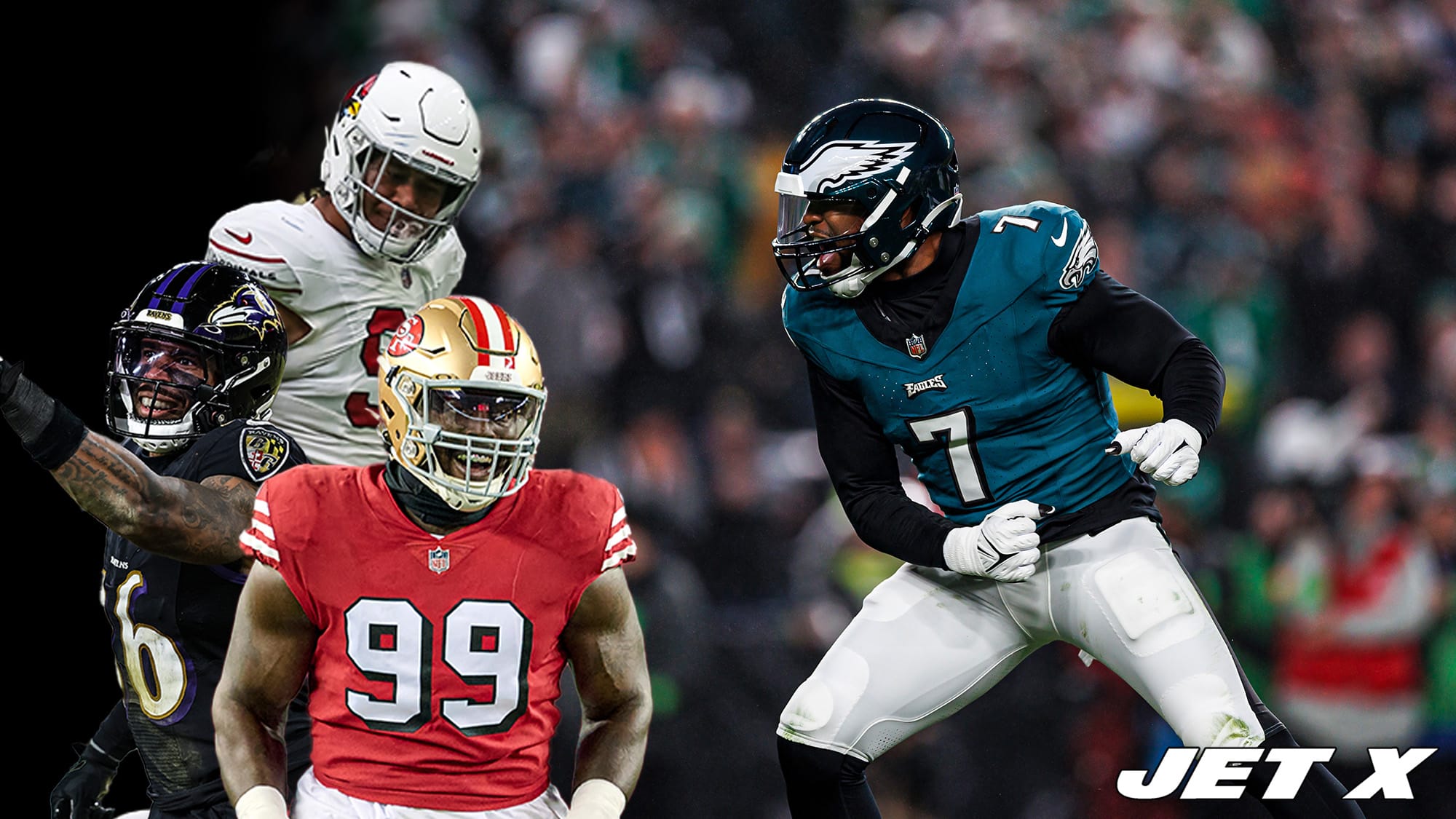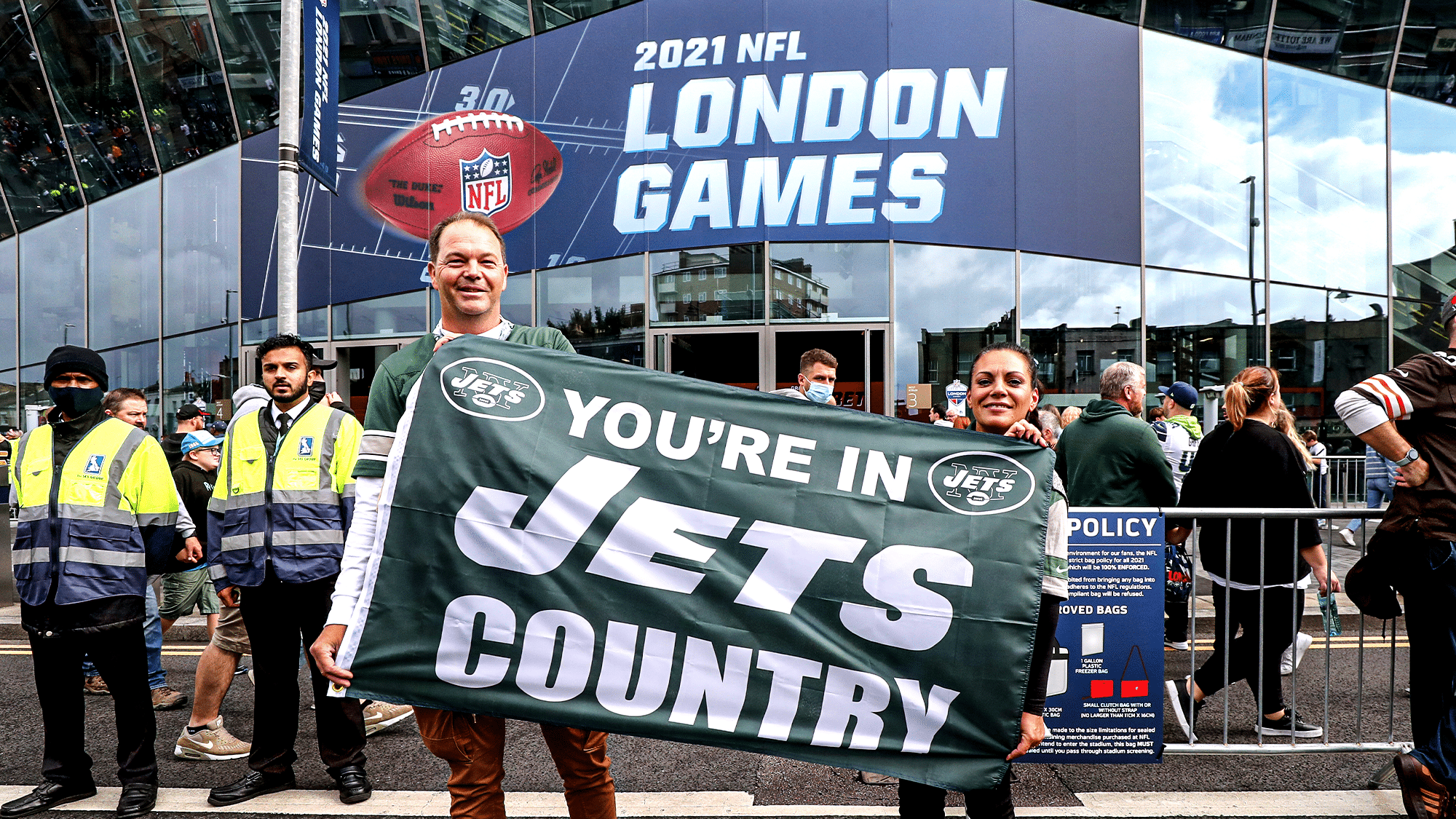Both of the New York Jets’ rookie running backs will add a much-needed ability in the RB room
The New York Jets’ fourth-round selection of Wisconsin running back Braelon Allen was widely praised at the moment it was announced. However, when the Jets followed up the Allen pick by taking another running back 39 spots later in South Dakota State’s Isaiah Davis, it turned some heads.
When you break it down, though, the double-dip at running back makes sense. The Jets only had one proven NFL running back on their roster entering the draft. So, why not take two?
Following Breece Hall, the Jets’ only other running back on the roster who took an NFL carry in 2023 was Israel Abanikanda, the team’s fifth-round pick. While Abanikanda is a speedy prospect with exciting potential, the harsh reality is that he struggled mightily in his rookie season.
The sample size was very small (22 carries), but Abanikanda averaged only 3.2 yards per rush attempt. He was also inefficient in the passing game, generating just 43 receiving yards on 11 targets (3.9 yards per target). On top of that, Abanikanda had a fumble and two drops despite a small volume of chances. Furthermore, the Jets were afraid to deploy him as a pass blocker, limiting his ability to get on the field.
While you can try to blame the Jets’ offensive line for his lack of rushing production, the problem is that Abanikanda did not perform well in OL-independent metrics, either.
Abanikanda averaged -0.9 RYOE (Rushing Yards Over Expected) per carry, ranking 83rd out of the 96 running backs with at least 20 carries. That put him only five spots ahead of a washed-up Dalvin Cook (-1.2). Meanwhile, in the same situation, Hall outperformed the Jets’ woeful blocking to an elite level, as his 0.7 RYOE per carry ranked fourth among running backs with at least 150 carries.
Abanikanda still has a chance to become a solid NFL running back. But until he proves it, the Jets should not expect anything from him. He’s a fifth-round pick. Most of them don’t pan out. So, considering Abanikanda’s lack of promise in his rookie year, the Jets likely entered the 2024 draft operating as if they only had one running back who was a lock to make the 53-man roster.
That alone made it worthwhile to take two running backs. In particular, though, it made sense for the Jets to target the type of running backs that they did.
Allen and Davis both thrive in the area that was arguably the greatest weakness between Abanikanda and Cook in 2023: creating yardage after contact.
Neither of the Jets’ backup running backs could muster up their own yardage last year. If Hall was off the field, all his replacement could do was pick up whatever yardage was blocked for them (which typically wasn’t much behind that O-line). There was zero semblance of thump without Hall, giving the defense a chance to catch their breath whenever Hall sat.
Among the 96 running backs with at least 20 carries last season, Abanikanda ranked 92nd in yards after contact per carry (2.1) while Cook ranked 85th (2.2).
Now, the Jets have two young thumpers with the ability to plow defenders and create extra yardage beyond what was blocked for them. The Jets can continue wearing down the defense while Hall rests.
We shall see if they can translate it to the NFL, but Allen and Davis thrived in this category at the college level. In 2023, Davis led all FCS running backs with 936 total yards after contact, and his average of 4.0 per carry was tied for 14th-best among 111 qualifiers (min. 100 carries). Allen had 682 yards after contact and averaged 3.8 per carry, placing 29th among 157 FBS running backs with at least 100 carries.
Davis vs #7 🦾👀 pic.twitter.com/RyeHnOgujz
— Joe Blewett (@Joerb31) April 30, 2024
Love the finish on the run by Isaiah Davis after he bounces it outside.
STIFF arms the DB throwing him into the turf and over an ad sign 😤 pic.twitter.com/alEsxO3iEo
— Joe Blewett (@Joerb31) April 30, 2024
Another play, another Isaiah Davis stiff arm, this time freeing himself up for a TD pic.twitter.com/zHV3GcHzbM
— Joe Blewett (@Joerb31) April 30, 2024
Round: 4️⃣ Pick: 1️⃣3️⃣4️⃣@BadgerFootball RB @BraelonAllen 👉 @nyjets #B1GFootball x #nfldraft pic.twitter.com/32fz7833rO
— Big Ten Football (@B1Gfootball) April 27, 2024
Didnt take much time into Braelon Allen's 2022 film to find a highlight…. pic.twitter.com/5TB8MViDJW
— Joe Blewett (@Joerb31) April 28, 2024
Really nice TD run from Braelon Allen here
Power, nothing opens up for Allen on the frontside
Patience while getting vertical behind the OL who are creating some push
Gap opens and he explodes through it
Good job keeping his knees high in traffic pic.twitter.com/9LSUVfexnv
— Joe Blewett (@Joerb31) April 29, 2024
Abanikanda’s lack of yardage after the contact was already a concern before he came to the NFL. In his 2022 season at Pittsburgh, Abanikanda averaged just 2.7 yards after contact per carry, ranking 129th out of 168 qualifiers. This makes it difficult to envision Abanikanda turning it around as a pro. In Allen and Davis, the Jets have two players who are coming into the league with a track record of success in this area. Maybe it translates, maybe not, but at least they have shown the potential to do it successfully in the NFL.
This is important because of the mentality New York is trying to establish on offense. All of the Jets’ offensive additions throughout this offseason have sent the message that they want to be a gritty, in-your-face, hard-nosed offensive team in 2024. It’s no longer about speed and finesse in New York. It’s about power and toughness.
The Jets added two nasty offensive linemen from a gap-blocking scheme, John Simpson and Morgan Moses. Their splash addition at wide receiver is a 6-foot-4, 218-pound beast who can box defenders out in the passing game and contribute as a blocker in the run game. They bypassed drafting an undersized YAC tight end in the first round to continue loading up their offensive line. They drafted a tank of a receiver in Malachi Corley who has drawn Deebo Samuel comparisons; he carries a 215-pound frame at 5-foot-11, did 27 reps on the bench press, and effortlessly powers through defenders with the ball in his hands.
And to top it all off, they went out and drafted two running backs who are known as downhill, power runners.
Some might argue the Jets should’ve filled their running back need with a proven veteran. I say the opposite. By now, we should all know what the typical running back career arc looks like. They peak early and progressively decline with each passing year. Generally speaking, the younger your running back room is, the better.
Infusing the backfield with two rookies is a smart choice for what the Jets want to do offensively. They have two pairs of fresh legs ready to hammer defenses with maximum aggressiveness in relief of Hall. Not to mention, filling out your running back depth chart with Day 3 picks is a wise financial decision. Why sign some has-been for more money than a rookie who will give you the best years of his career on his rookie contract?
Running back depth was one of the Jets’ biggest weaknesses on offense last year. By drafting two young players who fit seamlessly into their newfound offensive identity, the Jets have positioned themselves to turn that weakness into a strength.












I think we’ll see two back sets with Davis serving as a FB. Izzy may get a chance to be the KR, and he may be the odd man out but I do think he sticks with the team in some way, shape or form.
Right now we are all speculating the Jets are changing to more of a “gap scheme” let’s see how it actually shakes out.